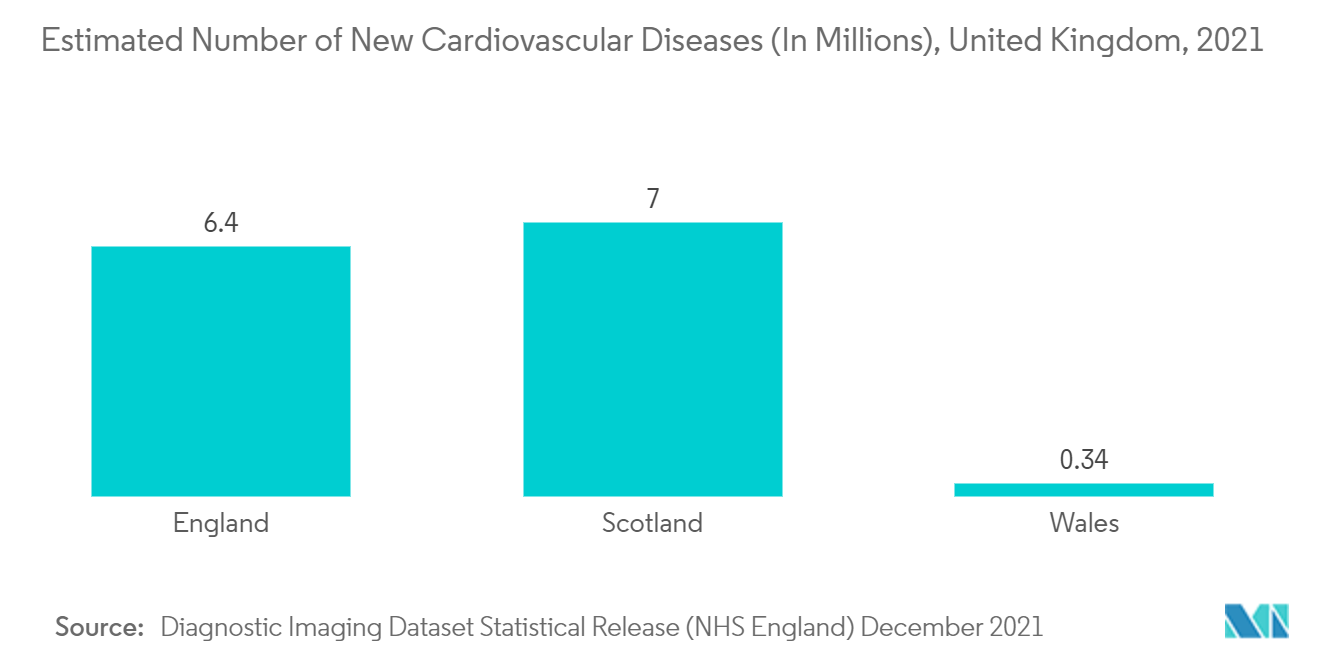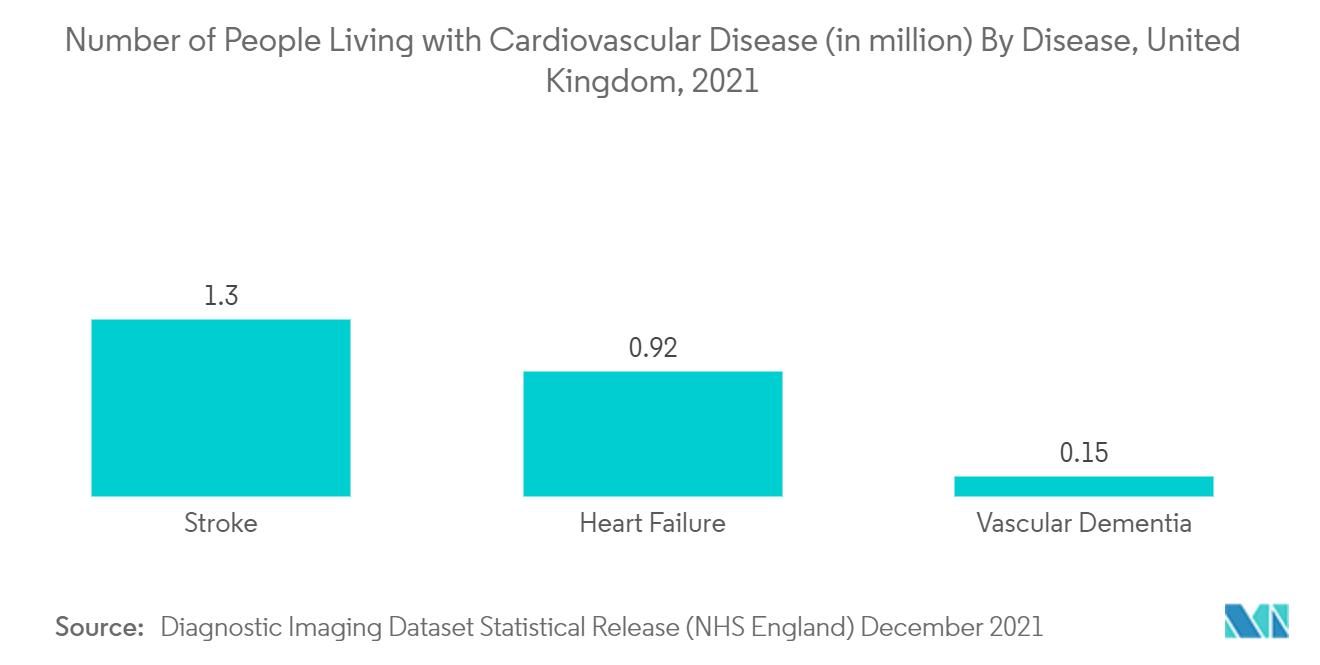Market Trends of United Kingdom Diagnostic Imaging Equipment Industry
This section covers the major market trends shaping the UK Diagnostic Imaging Equipment Market according to our research experts:
MRI Segment is Expected to Hold a Significant Market Share Over the Forecast Period
The MRI equipment segment is expected to witness significant growth in the market owing to factors such as an increasing prevalence of chronic diseases (such as cardiovascular diseases, musculoskeletal diseases, cancer, and others), a growing geriatric population, and technological advancements.
For instance, the 2021 United Kingdom Factsheet estimated that as of January 2022, about 7.6 million people in the United Kingdom (4 million men and 3.6 million women) were affected by heart and circulation disorders. Therefore, the rising prevalence of chronic diseases among the population is anticipated to increase the need for diagnostic imaging equipment for the detection of cancer/tumor and cardiac conditions, as well as for the planning of treatments, such as surgery or other therapies.
Furthermore, growing company activities in developing advanced imaging systems and establishing diagnostic facilities are expected to increase the demand for these equipment, thereby boosting the market growth. For instance, a new magnetic resonance imaging (MRI) scanner facility costing EUR 3.1 billion (USD 3.08 billion) opened in Leicester in July 2021, reflecting growth in the United Kingdom scanner market. As a result, researchers will be able to photograph up to 1500 extra patients, suffering from cardiovascular diseases, annually. Additionally, the British Heart Foundation (BHF) has provided a donation of EUR 1 million (USD 990,000) for this new scanner facility, which will be held jointly by Leicester's Hospitals with a EUR 1 billion gift (USD 990 million). Similar to this, the Royal Free Hospital in the United Kingdom installed 3 brand-new high-field 3T MRI scanners in March 2021 to increase scanning capacity and enable cutting-edge scanning techniques.
The National Health Service England reported that in May 2022, there were around 3,729,620 magnetic resonance imaging (MRI) treatments carried out on NHS patients in England (as of January 2021 - January 2022). Additionally, 299,615 more magnetic resonance imaging (MRI) procedures were carried out in January 2022 than in December 2021 (299,615). Thus, it is anticipated that the growth of the studied segment will be aided throughout the forecast period by the increasing number of imaging diagnostics operations in England.
Thus, the increasing burden of chronic diseases among the population and growing investments by the government and hospitals to establish scanning facilities are expected to increase the demand for various advanced imaging systems, thereby propelling market growth.

Cardiology Segment is Expected to Hold a Significant Market Share Over the Forecast Period
By providing strategic benefits in diagnostic and therapeutic decision-making, medical imaging devices play a crucial part in managing heart-related disorders. It provides vital inputs for diagnosis, staging, treatment, prognosis, and follow-up. Furthermore, echocardiography (echo), cardiac magnetic resonance imaging (MRI), and cardiac computed tomography (CT) scanning are some of the advanced imaging systems used in cardiac procedures. These operations are minimally invasive, virtually painless, and in some cases, merely require an intravenous (IV) insertion. In the United Kingdom, prevalence of cardiac diseases is increasing. As imaging modalities provide clarity on the condition of the heart, these imaging diagnostics are gaining demand in the country, which is anticipated to fuel the segment's growth.
According to the British Heart Foundation's (BHF) fact sheet released in August 2022, the disease burden from heart and circulatory diseases is high, estimated at USD 10.7 billion (GBP 9 billion) per year for the United Kingdom. This is anticipated to contribute to the demand generation for diagnostic imaging devices, propelling the cardiology segment's growth over the forecast period. Moreover, the acquisition of modalities by end users is anticipated to further fuel the segment's growth. For instance, in February 2022, the John Radcliffe Hospital, a part of Oxford University Hospitals NHS Foundation Trust (OUH, Oxford, UK), started using the photon-counting CT scanner NAEOTOM Alpha (Siemens Healthineers), a high-resolution and dose reduction technology.
Thus, technological developments and constant government activities are likely to drive future growth of the segment.


